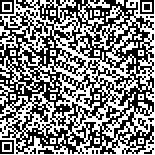| 引用本文: | 田昌绪,朱奕安,钟键,林星桦,叶明慧,黄洋,张玉蕾,朱春华,李广丽.多鳞鱚(Sillago sihama)高密度遗传连锁图谱构建及生长性状QTL定位分析.海洋与湖沼,2023,54(1):194-203. |
| |
|
| |
|
|
| 本文已被:浏览 705次 下载 1036次 |

码上扫一扫! |
|
|
| 多鳞鱚(Sillago sihama)高密度遗传连锁图谱构建及生长性状QTL定位分析 |
|
田昌绪1,2, 朱奕安1, 钟键3, 林星桦1, 叶明慧1, 黄洋1,2, 张玉蕾1, 朱春华1,2, 李广丽1,2
|
|
1.广东海洋大学水产学院 广东省名特优鱼类生殖调控与繁育工程技术研究中心 广东省水产动物病害防控与健康养殖重点实验室 广东湛江 524088;2.南方海洋科学与工程广东省实验室(湛江) 广东湛江 524088;3.湛江海关技术中心 广东湛江 524022
|
|
| 摘要: |
| 为构建多鳞鱚(Sillago sihama)遗传连锁图谱并鉴定生长等重要经济性状数量性状位点(QTL),实验通过基因分型测序(GBS)技术对163个多鳞鱚个体(2个亲本和161个全同胞家系F1代)进行测序及标记分型,并通过复合区间定位法对该物种的体重、体高、体厚、眼径、体长和背鳍前长6个生长性状进行QTL定位分析。结果显示,多鳞鱚首张高密度遗传连锁图谱全长2154.803cM,标记间平均遗传距离0.455cM,共有4735个SNP标记分配到24个连锁群。QTL定位分析结果发现在6个生长性状中共检测到20个生长显著相关QTL位点,分布在8个连锁群上,单个QTL的LOD值范围为3.02~4.23,可解释的表型变异范围为0.14%~8.42%。其中,在连锁群LG08聚集了8个生长性状显著相关的QTL。通过对候选QTL区间内的基因进行功能注释,共筛选到了19个潜在生长调控相关基因,包含igf1、igf2、sstr5、sst1a、tgfbr2、gas1、igfals、gfg6、gfg20、bmp7、kdm5c、tti1以及rbm10等。实验获得的遗传标记及相关候选基因是多鳞鱚生长相关性状标记辅助选择(MAS)的有用基因资源,为进一步研究鱼类生长调控机制提供了更多的理论依据。 |
| 关键词: 多鳞鱚 基因分型测序(GBS) 数量性状位点(QTL) 生长相关性状 候选基因 |
| DOI:10.11693/hyhz20220500118 |
| 分类号: |
| 基金项目:广东省基础与应用基础研究基金,2021A1515010733号,2019A1515110619号;广东海洋大学创新强校工程项目,2019KTSCX060号;2021年广东省科技创新专项资金,SDZX2021041号;广东省南美白对虾现代种业产业园项目,K22221号;广东海洋大学科研启动经费资助项目,R19026号;广东大学生科技创新培育专项资金资助项目,pdjh2022b0239号;2022年国家级大学生创新创业训练计划项目,202210566003号;海关总署2021年科技项目,2021HK205号。 |
附件 |
|
| CONSTRUCTION OF A HIGH-DENSITY GENETIC LINKAGE MAP AND QTL DETECTION OF GROWTH TRAITS OF SILVER SILLAGO (SILLAGO SIHAMA) |
|
TIAN Chang-Xu1,2, ZHU Yi-An1, ZHONG Jian3, LIN Xing-Hua1, YE Ming-Hui1, HUANG Yang1,2, ZHANG Yu-Lei1, ZHU Chun-Hua1,2, LI Guang-Li1,2
|
|
1.Guangdong Provincial Key Laboratory of Aquatic Animal Disease Control and Healthy Culture, Guangdong Research Center on Reproductive Control and Breeding Technology of Indigenous Valuable Fish Species, Fisheries College, Guangdong Ocean University, Zhanjiang 524088, China;2.Southern Marine Science and Engineering Guangdong Laboratory(Zhanjiang), Zhanjiang 524088, China;3.Zhanjiang Customs District Technology Center, Zhanjiang 524022, China
|
| Abstract: |
| Construction of high-density genetic map and quantitative trait loci (QTL) mapping are powerful tools for identifying genetic markers and candidate genes that may be responsible for such polygenic trait as growth. The first SNP-based high-density genetic linkage map was constructed by sequencing 163 silver sillago (Sillago sihama) individuals (2 parents and 161 F1 offspring) according to a genotyping-by-sequencing (GBS) method. The consensus map spanned 2 154.803 cM, on average marker interval of 0.455 cM. In total, 4 735 SNPs were assigned to 24 linkage groups (LGs). Then, the QTL of 6 growth related traits was mapped via composite interval mapping (CIM), including body weight, body length, body thickness, body height, pre-dorsal length, and eye diameter. Twenty significant QTLs were identified on 8 LGs and explained 0.14%~8.42% of the phenotypic variance. The logarithm of odds (LOD) value ranged from 3.02 to 4.23. Specially, 8 QTLs were distributed on one linkage group (LG08), and the regions showed overlapping on LG08. Through the functional annotation of the genes in the candidate QTL interval, 19 potential growth-related genes were screened, including igf1, igf2, sstr5, sst1a, tgfbr2, gas1, igfals, gfg6, gfg20, bmp7, kdm5c, tti1, and rbm10. These genetic markers and candidate genes are useful genomic resources for marker-assisted selection (MAS) in silver sillago and the QTLs are useful tools for growth mechanism analysis of this fish. |
| Key words: Sillago sihama genotyping-by-sequencing (GBS) quantitative trait loci (QTL) growth-related traits candidate genes |
|
|
|
|
|
